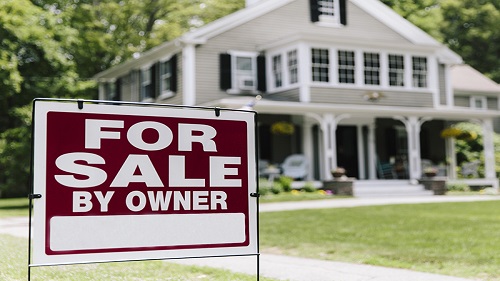
Mortgage Dove
What Is the Capitalization Rate in Real Estate?
Whether you're already investing in real estate or thinking about it, you're likely obsessed with finding great deals on investment properties. You might be able to tell a good property from a bad one when you know the market well. As you grow your holdings, you'll need a more sophisticated system that is based on metrics.
In real estate investing, the capitalization rate (cap rate) is one metric that's vital for evaluating properties and finding good deals. Let's look at what cap rates are, what they tell us, and how they are calculated.
What Is A Cap Rate In Real Estate?
Cap rates estimate and compare returns on multiple commercial or residential properties. This article will focus on residential rental property - homes with one to four units - held for commercial or investment purposes.
The cap rate is calculated by dividing the property's net operating income (NOI) by the property asset value.
A cap rate can provide valuable insight into a property. Nevertheless, the cap rate is not the only metric used to evaluate real estate investments. Among other factors, including the property's characteristics and location, investors should also consider the return on investment (ROI), internal rate of return (IRR), and gross rent multiplier (GRM).
Cap Rate Formula: How To Calculate Cap Rates
A property's cap rate is determined by its potential revenue and risk level in comparison to other properties. However, the cap rate does not provide a total return on investment. In its place, it will indicate how long it will take to recover the property's initial investment.
It is important to learn how to calculate the cap rate to effectively utilize this metric. To calculate the cap rate, you'll need to use the following formula:
Cap Rate = Net Operating Income (NOI) ∕ Current market value
To better understand this formula, let's walk through an example.
1. Calculate The Property’s Net Operating Income
To begin with, you will need to learn how to calculate net operating income (NOI). NOI is essentially the difference between the property's income streams and expenses.
If you want to add up the property's income streams, you can include rental income, fees, and onsite amenities that require additional fees. For example, consider a property that generates $5,000 in rental income per month without any additional sources of income.
Adding up the property's expenses is the next step. Several expenses must be considered, such as property taxes, insurance premiums, repairs, and legal fees. Potential vacancies, for example, are less obvious expenses that should also be taken into account. For an accurate estimate of the property's vacancy rate , you may need to do some local research. Most investors assume an average vacancy rate of 10%, but you can find out what it is in your area by doing some research. In the case of the property you are considering, the total expenses are $1,000 per month, including a 10% vacancy expectation.
To purchase the property, you may need rental income, which can increase the vacancy rate to 25%.
As soon as you determine the property's income and expenses, you can subtract those costs from the income. After that, you'll determine the NOI. For example, the property generates $48,000 per year in net operating income of $4,000 per month.
2. Divide By The Current Market Value
To determine the current market value , divide net operating income by the current market value. Investors debate whether to use the current market value or the purchase price, but most prefer to use the property's current market value.
As a result, we will follow the more widely accepted formula and divide net operating income by market value. Several home valuation estimation tools are available to assist you in determining the property's current market value.
Based on our example, the property's current market value is $480,000. We can divide $48,000 by 10, which equals 0.10.
3. Convert Into A Percentage
Your final step is to convert the division product into a percentage. By multiplying the result by 100, you can get the result. Our cap rate of 10% can be calculated by multiplying 0.10 by 100. A cap rate is represented as a percentage.
What are the Limitations of the Cap Rate?
The capitalization rate can be a useful metric in case a property generates a stable income stream. However, it is not as reliable if it generates irregular or inconsistent cash flows. Using a discounted cash flow model to estimate investment returns might be a better option here.
For a capitalization rate to be useful, a property's income must remain stable in the long run. Depreciation and structural changes in the rental market can cause income fluctuations in the future, so it does not account for future risks. If investors use cap rate calculations for investment purposes, they should consider these risks.
What is a Good Cap Rate?
Investors should consider their risk appetites when evaluating a property, as there is no "ideal" capitalization rate. Generally, high capitalization rates will indicate high risk, while low capitalization rates will indicate lower returns but lower risks.
According to many analysts, a "good" cap rate is between 5% and 10%, while a 4% cap rate indicates a lower risk but a longer timeline to recoup an investment . Additionally, it is critical to consider other factors, like the local property market, and not rely solely on the cap rate.
What Affects the Cap Rate?
The capitalization rate of a property can be influenced by a variety of market factors. In commercial properties, location plays an influential role in determining the return, with high-traffic areas likely to have a higher capitalization rate.
In addition to the local market, other factors need to be considered, such as competing properties. Property values in a large, well-developed market will generally have a lower capitalization rate due to competition from other businesses. The long-term capitalization rate of a property can also be influenced by future market trends, such as growth in the local market.
Lastly, the amount of capital you invest in a property can also affect its cap rate. Increasing the rental income of a property can be accomplished through renovations that make it more attractive.
Interpreting the Capitalization Rate
As cap rates are based on forecasts of future income, they are subject to large variances. When it comes to investing in real estate, it is important to know what is a good cap rate.
In addition, the rate indicates when a property will be able to recoup its investment. In the case of a 10% cap rate, it will take around 10 years for the investment to be recovered.
There is a difference in risk associated with different cap rates between different properties, as well as different cap rates across different time horizons on the same property. Based on the formula, cap rate values are higher for properties that generate higher net operating income and have a lower valuation.
Let's say two properties have the same attributes except they are geographically separated. One is in the city center, while the other is on the outskirts.
When all things are equal, the first property will generate a higher rental than the second one, but the higher maintenance costs and higher taxes will partially offset that. Due to its significantly higher market value, the city center property will have a lower cap rate than the second one.
Accordingly, a low cap rate indicates better valuation and better returns at a lower level of risk. In contrast, a higher cap rate indicates lower prospects of return on property investment and higher risk.
Capitalization Rate on Property
Capitalization rate measures can differ widely in various scenarios, and property investment is risky.
A few of the tenants may move out, resulting in a decrease in rental income to $40,000. Based on a $20,000 reduction in maintenance costs and property taxes, and assuming a $1 million property value, the capitalization rate is ($20,000 / $1 million) = 2%. It is lower than the return provided by risk-free bonds.
It is essentially possible to significantly change the capitalization rate based on the income generated from the property, the expenses related to the property, and the property's market value.
Investors can theoretically earn a surplus return over and above Treasury bond investments because of the associated risks. The risk factors include:
- Property's age, location, and status
- Type of property: multifamily, office, industrial, retail, or recreational
- Tenants’ solvency and regular receipts of rentals
- Term and structure of tenant lease(s)
- Valuation factors and the overall market rate of the property
- Fundamental macroeconomic conditions of the region and factors that affect tenants' businesses
How Do Capitalization Rates and Returns on Investment Differ?
An investment's return on investment indicates what it might yield over a given period. By calculating the capitalization rate, you can determine what the current return on investment is or what it should be.
The Bottom Line
A capitalization rate is used to measure the profitability of commercial rental properties. Concerning the size of the initial investment, a high cap rate indicates a relatively high income. In addition to risk and local market dynamics, there are other factors to consider. Along with the capitalization rate, investors should consider a wide range of metrics.
"Mortgage Dove makes home financing convenient for every American. You can count on us to provide a home buying experience tailored to your personal needs and financial situation. We strive to give you the peace of mind that your home financing goals can be achieved.”

Mortgage®
www.mortgagedove.com



